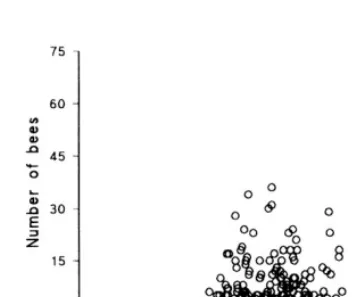Competition between Honey-Bees (Apis mellifera) and Wasps (Vespula Spp) in Honeydew Beech (Nothofagus solandri: Var solandri) Forest
Full text
Figure



![Figure 3. The number of bees and wasps feeding at a Petridish containing 5 cm] of a sucrose, fructose and glucosesolution during 12 five-minute samples on 31 March1992](https://thumb-us.123doks.com/thumbv2/123dok_us/1218883.1625580/6.595.97.274.107.257/figure-feeding-petridish-containing-sucrose-fructose-glucosesolution-samples.webp)
Related documents
The purpose of this study is to test further on the effect of price changes on com- modities (gold, silver, and world oil) and changes in USD/IDR exchange rates against
Mr Alaa Mohsin Jabbar Al Ghazzawi Thi Qar Food Industry Wheat factory Background and Project Purpose: The company was
ELEKTROCHEMICKÝ PROCES SPRACOVANIA POZLÁTENÝCH KONTAKTOV Z výsledkov hydrometalurgických skúšok získavania zlata z pozlátených kontaktov je zrejmé, že použitie
Queer/Disabled Existence” in Lennard J. The Disability Studies Reader.. individuals, including themselves, by virtue of their differences. In addition to their distinctive voices,
Research questions in Tellier’s study (2005) clearly indicate that the researcher attempts to investigate the impact of repetition, repetition associated with visualization
Even though both congenital and acquired anatomic uterine defects can potentially affect reproductive capability, an association between mu¨llerian anomalies and repro- ductive
Given that more than one-half of patients with multicomorbidity had either diabetes or renal disease, and in view of the interrelationships between these two comor- bidities with
Patients who received therapeutic anticoagulation treatment showed significantly higher rates of major bleeding while In the other hand, subtherapeutic doses of anticoagulation